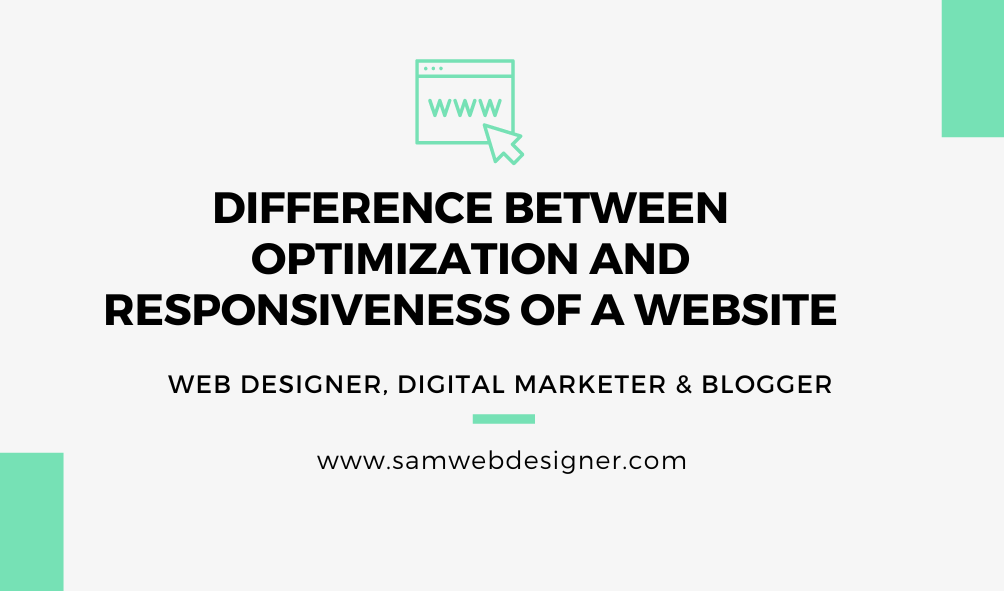A website is responsive when it can adapt to various devices, and screen sizes, and display its content. , Mobile optimization is a process of designing and developing a website to ensure that it provides users with a good experience and functions on mobile devices like tablets and smartphones. Both are related concepts in web designing but focus on different aspects of user experience.
Here are some of the differences between responsiveness and mobile optimization.
Scope
Responsiveness: Layout and design of the website are primarily dealt with by responsiveness of a website. It ensures its design is flexible and can adapt to different screen sizes, including mobiles and
desktops.
Mobile Optimization: Mobile optimization deals with optimizing website performance, user interface, and user experience specifically for mobile users.
Performance
Responsiveness: It addresses issues like visual consistency across the device, however, fails to focus on issues like performance and loading time on mobile networks and other mobile-specific concerns.
Mobile Optimization: Mobile optimization strongly focuses on ensuring that the website loads quickly on mobile devices, because it is essential to retain mobile users.
Content prioritization
Responsiveness: Does not involve arranging design elements to fit screen size or address content prioritization for mobile users.
Mobile Optimization: Mobile optimization restructures content in a specific way so that mobile users get a good experience on the website despite a limited space for smaller screens.
User interface enhancement
Responsiveness: User interface enhancement has many aspects, like touch-friendly elements, consistency in design, feedback, clutter reduction, navigation, menu, directions, etc. While responsive design can adjust layouts, it fails to enhance its website features for mobile devices.
Mobile Optimization: Mobile optimization includes features like touch-friendly buttons, simplified menus, etc. to improve users’ experience on touch screens or any type of mobile device.
Design and user experience
Responsiveness: Addresses visual aspects like design and elements to adjust to different screen sizes, however, it does not guarantee and optimize the user’s experience.
Mobile Optimization: It goes beyond design and focuses on a user-friendly experience. For mobile users, it optimizes touch-friendly elements of devising navigation content limitations and many more.
Conclusions
In conclusion, the distinction between website optimization and responsiveness lies in their respective focuses on different aspects of user experience.
Responsiveness primarily deals with the layout and design of a website, ensuring flexibility to adapt to various screen sizes, including mobiles and desktops.
On the other hand, mobile optimization is a more targeted process, concentrating on enhancing website performance, user interface, and overall user experience specifically for mobile users.
While responsiveness addresses visual consistency across devices, it falls short in addressing performance issues and loading times on mobile networks.
Mobile optimization, however, strongly emphasizes the need for quick loading times on mobile devices to retain and satisfy mobile users.
Content prioritization is another differentiating factor. Responsiveness does not involve arranging design elements or addressing content prioritization for mobile users, whereas mobile optimization strategically restructures content to ensure a positive user experience on smaller screens.
In terms of user interface enhancement, responsiveness adjusts layouts but may not optimize website features for mobile devices.
In contrast, mobile optimization includes touch-friendly elements and simplified menus to significantly improve the user experience on various mobile devices.
In essence, while both concepts are related and contribute to a seamless web experience, they cater to distinct aspects, with responsiveness focusing on adaptability and design, and mobile optimization honing in on performance and user-centric enhancements for mobile users.

